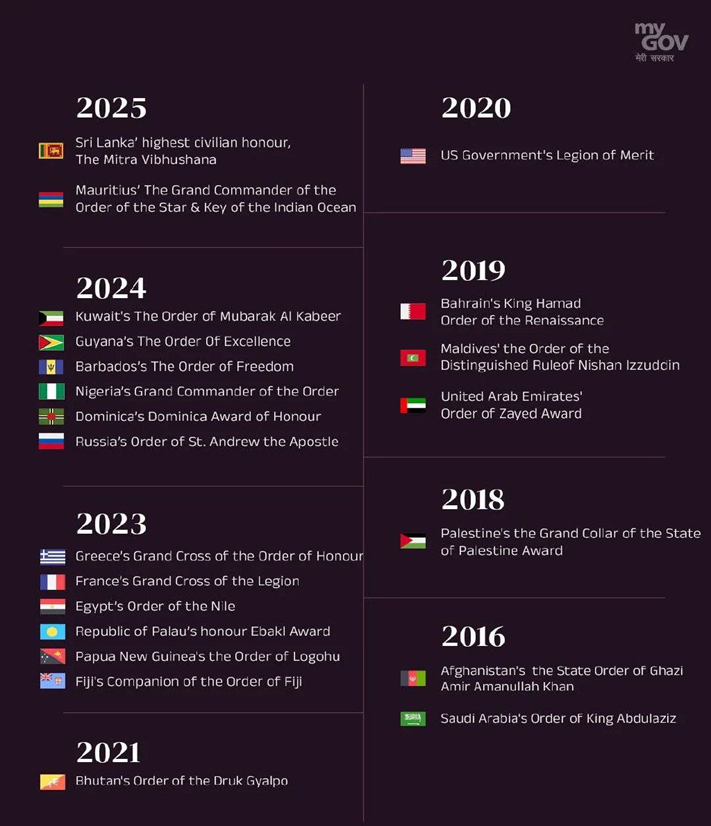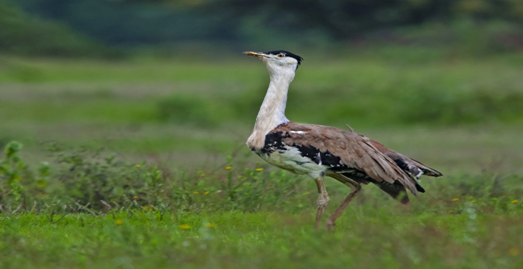- Courses
- GS Full Course 1 Year
- GS Full Course 2 Year
- GS Full Course 3 Year
- GS Full Course Till Selection
- CSAT
- 5 LAYERED ARJUNA Mentorship
- Public Administration Optional
- Online Program
- GS Recorded Course
- NCERT Batch
- Polity Module Course
- Geography Module Course
- Economy Module Course
- AMAC Module Course
- Modern India, Post Independence & World History Module Course
- Environment Module Course
- Governance Module Course
- Science & Tech. Module Course
- International Relations and Internal Security Module Course
- Disaster Management Module Course
- Ethics Module Course
- Essay Module Course
- Current Affairs Module Course
- ABOUT US
- OUR TOPPERS
- TEST SERIES
- FREE STUDY MATERIAL
- VIDEOS
- CONTACT US
Daily Current Affairs Summary 8th APRIL 2025
Daily Current Affairs Summary 8th APRIL 2025

NATO Countries Withdraw from Ottawa Convention on Anti-Personnel Landmines Amid Growing Threats from Russia
- NATO members Poland, Finland, and all three Baltic states (Estonia, Latvia, and Lithuania) have announced plans to withdraw from the 1997 Ottawa Convention, which bans the use, production, and stockpiling of anti-personnel landmines.
- These decisions come in response to growing military threats from Russia.
- Their withdrawal seeks to put them on more equal footing with Russia, which has not signed or ratified the Ottawa Convention, along with countries such as the United States, China, India, and Israel.
|
What is the Ottawa Convention?
|
Impact on Global Disarmament Efforts
- The withdrawal of these countries threatens decades of global disarmament efforts. Anti-personnel landmines continue to maim and kill civilians long after conflicts end.
- Countries exiting the convention will be able to produce, use, stockpile, and transfer landmines once again.
- All European countries bordering Russia have announced plans to withdraw, with Norway as the sole exception. Norway emphasizes maintaining the stigma around landmines despite the rising threats.
The Human Cost of Landmines
- Landmines predominantly affect civilians. According to the International Committee of the Red Cross (ICRC), over 80% of mine victims are civilians.
- In Ukraine, now the most mined country in the world, there were 1,286 civilian casualties from mines and unexploded ordnance by August 2024.
Cluster Munitions
- Countries like Lithuania, which are withdrawing from the Ottawa Convention, are also considering leaving the 2008 Convention on Cluster Munitions.
- The United States, which has not signed this convention, transferred cluster munitions to Ukraine in 2023 to assist in its defense against Russia.
Prime Minister Narendra Modi Awarded Sri Lanka’s Highest Civilian Honour – ‘Sri Lanka Mitra Vibhushana’
- On Saturday, April 5, 2025, Prime Minister Narendra Modi was conferred with the ‘Sri Lanka Mitra Vibhushana,’ the highest civilian honour of Sri Lanka, by Sri Lankan President Anura Kumar Dissanayake.
- This award was presented to the Prime Minister as part of his state visit to Sri Lanka, which followed an invitation from President Dissanayake.
- This is the 22nd international honour awarded to Prime Minister Modi.
- The visit, according to a press release from the President’s office, emphasized the theme “Friendship of Centuries – Commitment to a Prosperous Future,” showcasing the ongoing strong ties between the two nations.

List of 22 highest civilian honours conferred on PM Narendramodi by nations across the world
What is the Sri Lanka Mitra Vibhushana?
- The award recognizes their friendship and solidarity with the people of Sri Lanka. It was instituted in 2008 by then-president Mahinda Rajapaksa and has since been the foremost award granted to foreigners by Sri Lanka.
- In fact, the award holds more significance than the national honours in Sri Lanka, including the Sri Lanka Rathna (equivalent to India’s Bharat Ratna).

The Sri Lanka Mitra Vibhushana medal
What Does the Award Comprise?
The Sri Lanka Mitra Vibhushana is made up of the following components:
- Citation and Silver Medal: The medal is studded with Navarathna (nine Sri Lankan gems) that encircle a globe, which is surrounded by lotus petals. The Navarathna symbolizes the enduring friendship between India and Sri Lanka.
- Pun Kalasa: At the center of the medal is a Pun Kalasa, a ceremonial pot filled with rice sheaves, symbolizing prosperity and renewal, akin to the kalasa used during Sankranti.
- Symbols: The top of the medal features symbols of the Sun and Moon and a Dharma Chakra, representing the shared Buddhist heritage of both India and Sri Lanka.
- Ribbon: The medal is worn around the neck with a 6.5 cm wide ribbon.
Who Are the Past Winners?
The Sri Lanka Mitra Vibhushana is granted at the President’s discretion and is recorded in a special register. Since its inception, only four people have been awarded this prestigious honour:
- Former Maldives President Maumoon Abdul Gayoom – He was the first recipient, awarded in February 2008. This recognition was for his “outstanding contributions to the friendship between the two countries, enhancement of regional cooperation, and the global campaign on climate change.”
- Palestinian President Mahmoud Abbas – Awarded in January 2014 for his contributions to Sri Lanka’s relationship with Palestine.
- Former Palestinian President Yasser Arafat – Posthumously awarded in January 2014, alongside Mahmoud Abbas.
PM Modi Visits Jaya Sri Maha Bodhi Tree in Anuradhapura, Sri Lanka
- On April 6, 2025, as part of his official visit to Sri Lanka, Prime Minister Narendra Modi visited the historic Jaya Sri Maha Bodhi temple in the ancient city of Anuradhapura.
- The Jaya Sri Maha Bodhi tree is regarded as the oldest living cultivated plant in the world.
- It is believed to have grown from a branch of the Bodhi tree in Bodhgaya, India, under which Gautam Buddha attained enlightenment.
What is the Jaya Sri Maha Bodhi Tree?
- The Jaya Sri Maha Bodhi tree is a Ficus religiosa (commonly known as the Pipal tree) and is believed to be a descendant of the Bodhi tree in Bodhgaya, India, under which Buddha achieved enlightenment.
- The branch of the Bodhi tree was brought to Sri Lanka by Sanghamitta, the daughter of Mauryan King Ashoka and a prominent Buddhist nun.
- Sanghamitta’s journey to Sri Lanka marked the establishment of Buddhism on the island.
- The arrival of the tree is commemorated annually through the Uduvapa Poya festival, celebrated on a full moon night in December.
- The Jaya Sri Maha Bodhi tree, alongside the other Buddhist shrines in Anuradhapura, is a major pilgrimage site for Buddhists around the world.
- Anuradhapura is now a UNESCO World Heritage Site, known for its historical and cultural significance.
Historical Significance of Anuradhapura
- Anuradhapura was once the Ceylonese political and religious capital, flourishing for over 1,300 years.
- However, the city was abandoned after an invasion by the Chola Empire of South India in 993 CE.
- Hidden away in dense jungle for many years, the ruins of Anuradhapura, including its palaces, monasteries, and monuments, have since been uncovered and restored, making the site accessible once again.
Why Did Sanghamitta Travel to Sri Lanka?
- Sanghamitta's journey to Sri Lanka was prompted by an invitation from the Sri Lankan king, Devanampiya Tissa, and the suggestion of her brother, Mahendra (or Mahinda), who was a Buddhist missionary.
- During the reign of King Ashoka, the Third Buddhist Council was held, during which it was decided to send missionaries to different regions to spread Buddhism.
- The successful mission to Sri Lanka was led by Mahinda, Ashoka’s son. Mahinda met King Devanampiya Tissa in Anuradhapura and converted him to Buddhism.
- After the king's conversion, several royal ladies expressed a desire to join the Buddhist monastic order, prompting Mahinda to send for his sister, Sanghamitta, who arrived in Sri Lanka to initiate them into the order.
- Both Mahinda and Sanghamitta lived in Anuradhapura for the rest of their lives, contributing to the spread of Buddhism on the island.
How Has the Jaya Sri Maha Bodhi Tree Survived for So Long?
The longevity of the Jaya Sri Maha Bodhi tree is attributed to dedicated care and the unique characteristics of the Pipal tree, which can regenerate from its roots and seeds. Despite its resilience, the tree has faced threats throughout history.
- In 1929, a man attempted to chop down the tree in an act of vandalism.
- In 1985, during a violent rampage by LTTE militants in Anuradhapura, 146 people were killed in the vicinity of the tree, but the tree itself survived the attack.
What About the Bodhi Tree in Bodhgaya?

The Maha Bodhi tree in Bodhgaya, Bihar.
- The original Bodhi tree under which Lord Buddha attained enlightenment in Bodhgaya, Bihar, was destroyed in ancient times.
- Some legends suggest that it was destroyed by Tishyarakshita, one of Ashoka's wives.
- The Pipal tree currently standing at the site in Bodhgaya is believed to be a descendant of the original tree, grown from the germplasm (genetic material) of the original tree.
- This new tree is also an important pilgrimage site for Buddhists.
Parliamentary Committee Recommends Reform of Criteria for Delisting Monuments from ASI Protection
- Amid ongoing controversy surrounding demands for the removal of the tomb of Mughal emperor Aurangzeb, which is a protected monument under the Archaeological Survey of India (ASI), a Parliamentary Committee has called for a review of the criteria used to delist monuments from the ASI’s protected sites list.
- The Union Culture Ministry has been asked to form an independent panel to re-evaluate and reform these criteria.
What is Delisting?
- Delisting refers to the removal of a monument from the ASI's protected sites list.
- Once delisted, the monument is no longer under the responsibility of the ASI for conservation, protection, or maintenance.
- This allows for regular construction and urbanization in the area, which could potentially damage the heritage site.
Current Situation:
- The ASI manages 3,698 centrally protected monuments under the Ancient Monuments and Archaeological Sites and Remains (AMASR) Act, 1958, which includes a range of sites such as temples, forts, tombs, and prehistoric sites.
- Recently, the ASI delisted 18 untraceable monuments, including Delhi’s Barakhamba Cemetery and Haryana’s Kos Minar No.13.
Additional Committee Suggestions:
- Heritage Conservation & Development Balance:
- The committee stressed the importance of balancing heritage conservation with developmental pressures. This can be achieved by combining technology, legal frameworks, climate adaptation, and community participation.
- This would help protect India’s cultural legacy for future generations while adhering to ASI’s mandate.
- Budgetary Recommendations:
- The committee recommended a more robust allocation for the conservation, restoration, and maintenance of protected monuments, especially World Heritage Sites. The increasing pressure on ASI’s existing resources requires enhanced funding.
- The ASI’s budget for 2023–24 was increased by 70%, amounting to ₹443.53 crore. Despite this, challenges like encroachment, climate threats, and resource gaps continue to pose significant obstacles.
- Multi-pronged Strategy for Protection:
- The committee proposed a GIS-based digital inventory with real-time monitoring and biennial audits to improve accountability and prevent monuments from being lost due to urbanization.
- Strengthening legal frameworks was also suggested, including introducing stricter penalties under the AMASR Act and setting up fast-track courts to handle heritage violations and encroachments.
Supreme Court Directive to Halt Deforestation Activities in Kancha Gachibowli
The Supreme Court of India has issued a directive to stop deforestation activities in the Kancha Gachibowli area of Telangana, following the state's plan to auction approximately 400 acres of forested land adjacent to the University of Hyderabad for the construction of IT parks. This plan sparked massive student protests, urging the government to reconsider the deforestation of valuable green space.
Significance of Urban Forests
Urban forests play a crucial role in the ecological, social, economic, and climate resilience of cities. Their importance is outlined below:
- Environmental Significance:
- Urban forests provide vital ecosystem services, including air and water purification, carbon sequestration, temperature regulation, and biodiversity conservation.
- For example, the Delhi Ridge acts as a green lung for the city, helping in the regulation of air quality and temperature.
- Social Benefits:
- Urban forests improve physical and mental health by offering spaces for recreation and relaxation. They reduce stress, promote physical activity, and help in enhancing social cohesion by providing community spaces.
- Economic Value:
- Urban forests have a direct impact on property values, making nearby areas more attractive for real estate. They also serve as a draw for tourism, and help in supporting local businesses and development.
- Climate Resilience:
- Urban forests enhance a city's ability to adapt to climate change by reducing the urban heat island effect, controlling flooding, improving air quality, and enhancing local biodiversity.
Threats to Urban Forests in India
Urban forests in India face several challenges that threaten their existence and sustainability:
- Rapid Urbanization and Infrastructure Development:
- Increasing urban sprawl and infrastructure development often result in the destruction of valuable forested areas. A notable example is the Aarey Forest issue in Mumbai, where deforestation was proposed for urban development.
- Pollution and Climate Change:
- Urban forests are affected by pollution and the impacts of climate change, including heat islands, erratic rainfall, and extreme temperatures. These factors hinder the growth and regeneration of trees, disrupting the balance of urban ecosystems.
- Invasive Species and Biodiversity Loss:
- Invasive species and monoculture plantations disrupt local ecosystems by outcompeting native species, leading to a loss of biodiversity and altering the natural structure of urban forests.
- Policy and Regulatory Gaps:
- The management of urban greenery is complicated by the involvement of multiple agencies, and there is an absence of a comprehensive urban forest policy to guide conservation and development efforts in urban spaces.
Government Initiatives for Urban Forest Conservation
To address the challenges faced by urban forests, the government has launched several initiatives aimed at protecting and enhancing green spaces in cities:
- Nagar Van Udyan Program: The Nagar Van Udyan program aims to create 200 urban forests across India. This initiative involves local communities, schools, and organizations in the development and maintenance of these forests.
- School Nursery Yojana (SNY): The School Nursery Yojana seeks to connect children with nature by involving them in growing saplings at school nurseries. This initiative promotes environmental education and encourages the younger generation to take part in conservation efforts.
- Miyawaki Forest Plantation: The Miyawaki Method is being used to create dense, self-sustaining forests using native species. These forests are designed to thrive in urban areas, contributing to biodiversity and helping improve the ecosystem.
- Greening Guidelines: The Union Ministry of Housing and Urban Affairs has introduced greening guidelines that require cities to maintain a minimum of 12-18% green cover. This policy aims to ensure that cities preserve adequate green spaces amidst urbanization and development.
India and Sri Lanka Sign 7 MoUs, Including First Defence Deal
- During Prime Minister Narendra Modi's visit to Sri Lanka, India and Sri Lanka signed seven Memorandums of Understanding (MoUs), marking significant milestones in bilateral relations.
- Notably, the visit also witnessed the signing of the first-ever defence cooperation deal between the two nations.
- Additionally, Prime Minister Modi was honoured with the Sri Lanka Mitra Vibhushana, the highest civilian award of Sri Lanka for foreign leaders.
Key Outcomes of the Visit
- Defence Cooperation:
- A significant umbrella agreement was signed to structure ongoing defence sector cooperation in a more comprehensive and organized manner.
- The agreement also saw the Sri Lankan President reaffirming Sri Lanka’s commitment not to allow its territory to be used against India, addressing growing concerns over China’s regional influence.
- Energy Cooperation: An agreement was reached for a grid connection between India and Sri Lanka for power trade. Additionally, discussions were held to develop the Trincomalee energy hub in collaboration with the UAE.
- Cooperation in Other Sectors:
- India pledged support to Sri Lanka in several key areas, including digitization, health, and the development of the Eastern Province.
- India also agreed to lower interest rates on loans to Sri Lanka, enhancing economic cooperation.
Importance of Sri Lanka for India
Sri Lanka holds significant strategic, economic, and cultural importance for India:
- Strategic and Geopolitical Significance:
- Sri Lanka plays a crucial role in India’s MAHASAGAR Vision. This initiative seeks to strengthen India’s ties with smaller nations in the Indian Ocean region, promoting mutual security and growth.
- MAHASAGAR (Mutual and Holistic Advancement for Security and Growth Across Regions) focuses on enhancing maritime domain awareness and curbing illegal activities in the region, ensuring the stability of critical shipping lanes.
- Economic Significance:
- The India-Sri Lanka Free Trade Agreement (FTA), signed in 1998, has helped boost bilateral trade to USD 5.5 billion in the fiscal year 2023-24.
- India’s exports to Sri Lanka amounted to USD 4.1 billion in the same period, underscoring the strong economic ties between the two countries.
- Cultural Ties: India and Sri Lanka share deep-rooted cultural ties, dating back to the time of Emperor Ashoka. One of the most symbolic examples is the sacred Bodhi tree at the Jaya Sri Maha Bodhi temple, which is believed to have grown from a sapling brought by Sangamitta Maha Theri, Ashoka’s daughter, from India in the 3rd Century BCE.
Challenges in India-Sri Lanka Relations
While the relationship between India and Sri Lanka has flourished in many areas, several challenges continue to impact bilateral ties:
- Chinese Influence:
- China's Belt and Road Initiative (BRI) has raised concerns in India, as Sri Lanka has become a key partner in China’s regional strategy.
- A significant example of this is the 99-year lease of the Hambantota Port to China, which has strategic and security implications for India.
- Tamil Ethnic Issue: The Tamil-Sinhala conflict in Sri Lanka continues to pose challenges in India-Sri Lanka relations.
- Despite progress in reconciliation efforts, there has been a delay in the implementation of the 13th Amendment to Sri Lanka's Constitution, which was meant to grant greater autonomy to the Tamil-majority regions.
- This issue has ramifications for India’s domestic politics, especially in Tamil Nadu.
- International Maritime Boundary: Several maritime disputes remain unresolved between India and Sri Lanka, including issues related to the firing on Indian fishermen, bottom trawling, and the dispute over the Katchatheevu Island.
UNHRC Adopts Resolution Linking Ocean Protection and Human Right to a Healthy Environment
- The United Nations Human Rights Council (UNHRC) has, for the first time, adopted a resolution that recognizes the critical connection between plastic pollution, ocean protection, and the right to a clean, healthy, and sustainable environment.
- This resolution marks a significant step towards addressing the growing concerns about marine ecosystems and their impact on human rights.
Key Highlights of the Resolution
- Human Rights Obligations: The protection of marine ecosystems is now formally recognized as part of states' obligations to uphold human rights. This includes ensuring access to a clean and healthy environment for all people.
- Impact of Ocean Degradation: The degradation of oceans is seen as a major threat to humanity, exacerbating global inequalities and disproportionately affecting marginalized populations.
- Pressing Threats to Marine Ecosystems: Despite over 600 international agreements aimed at marine protection, oceans still face significant threats, including climate change, overfishing, pollution, extractivism, and deep-sea mining.
Interlinkages Between Human Rights and Ocean Protection
The resolution underscores the vital links between ocean health and several human rights, emphasizing their importance for current and future generations:
- Right to Food: Healthy oceans provide high-quality protein and micronutrients to millions of people, particularly through fisheries. For instance, coral reefs support the livelihoods of over 500 million people by providing food.
- Right to Livelihood: Approximately 2.4 billion people live within 100 km of coastlines, many of whom depend on the oceans for their livelihood, through industries such as fisheries, tourism, and coastal ecosystem services like mangroves.
- Right to a Healthy Environment: Oceans play a critical role in regulating the Earth's climate, filtering air and water, recycling nutrients, and mitigating the impact of natural disasters. Their protection is essential for maintaining a stable environment for all life forms.
- Rights of Future Generations: Oceans act as a carbon sink, ensuring a stable climate for future generations. Their preservation is crucial for securing the well-being of those who will inherit the Earth.
Constitutional and Legal Framework in India
India has a robust legal and constitutional framework that aligns with global efforts to protect marine ecosystems and uphold the right to a healthy environment:
- Article 51A(g): Under the Constitution of India, this article imposes a fundamental duty on every citizen to protect and improve the natural environment, including forests, lakes, rivers, and wildlife. It also emphasizes compassion for living creatures.
- M.C. Mehta v. Union of India Case (1986): The Supreme Court of India recognized the right to a healthy environment as part of the Right to Life under Article 21 of the Indian Constitution. This landmark case highlighted the need for legal and constitutional safeguards to ensure environmental protection.
- MK Ranjitsinh v Union of India Case (2024): The Supreme Court, in this case, adopted a balanced approach between the conservation of endangered species and the need to address climate change. This judgment reinforces India's commitment to environmental preservation while considering the broader implications of ecological protection.
PM Inaugurates India's First Vertical Lift Railway Sea Bridge: The New Pamban Bridge
Recently, the Prime Minister of India inaugurated the new Pamban Bridge in Tamil Nadu, which is also India’s first vertical lift railway sea bridge.
About the New Pamban Bridge
- Replacement of the Original Bridge: The newly inaugurated Pamban Bridge replaces the original cantilever bridge built in 1914, which was decommissioned in 2022.
- The new bridge connects Rameswaram Island to the mainland of India, providing crucial rail connectivity.
- Design and Features: Designed by Rail Vikas Nigam Limited (RVNL), the new bridge features a 72.5-meter navigational span that can be raised up to 17 meters to allow larger ships to pass.
- This capability makes it an essential infrastructure asset for both rail travel and maritime navigation.
- Vertical Lift Mechanism: The vertical lift bridge is a type of movable bridge in which a span rises vertically, while remaining parallel with the deck.
- This allows it to efficiently accommodate both trains and ships in the busy maritime route.
India Secures Uncontested Position in UN Intergovernmental Working Group of Experts on ISAR for 2025–2027 Term
India has secured an uncontested position in the United Nations Intergovernmental Working Group of Experts on International Standards of Accounting and Reporting (ISAR) for the term 2025–2027.
About ISAR
- Function: ISAR is a standing intergovernmental working group dedicated to assisting member states in improving the quality and international comparability of financial reporting. It also focuses on non-financial disclosures, including environmental issues, corporate governance, and corporate social responsibility.
- Annual Sessions: ISAR holds its annual sessions in Geneva, where it addresses emerging issues in enterprise accounting and reporting. The forum allows for in-depth discussions on global standards and their application to improve financial transparency.
- Membership: ISAR consists of 34 formal members who serve three-year terms. The composition includes:
- Nine African countries,
- Seven Asian countries,
- Six Latin American countries,
- Three Eastern European countries,
- Nine Western European and Other States.
Successful Hatching of Great Indian Bustard Chicks Marks Key Milestone in Species Recovery
- In a significant development for the conservation of the Great Indian Bustard, four chicks were successfully hatched in a week at the Sudasari Centre in Rajasthan.
- This achievement marks a crucial milestone in the species' recovery under the Bustard Recovery Program.

Great Indian Bustard
About the Great Indian Bustard (Ardeotis nigriceps)
- Key Characteristics:
- Habitat: The Great Indian Bustard is endemic to the Indian Subcontinent, primarily found in Rajasthan and Gujarat, with small populations also in Maharashtra, Karnataka, and Andhra Pradesh.
- Diet: The species is omnivorous, feeding on grass seeds, insects (such as grasshoppers and beetles), and occasionally small rodents and reptiles.
- Conservation Status:
- Wildlife Protection Act, 1972: Listed under Schedule I, offering the highest level of protection.
- IUCN: Classified as Critically Endangered, with a rapidly declining population.
- CITES: Listed under Appendix I, prohibiting international trade of the species.
- The Great Indian Bustard has been identified as one of the species for recovery under the Integrated Development of Wildlife Habitats program, aiming to restore and protect its natural habitat.
Indian Lok Sabha Speaker Attends 150th IPU Summit in Tashkent, Uzbekistan
The Indian Lok Sabha Speaker recently attended the 150th Inter-Parliamentary Union (IPU) Summit in Tashkent, Uzbekistan, highlighting India’s active participation in global parliamentary diplomacy.
About the Inter-Parliamentary Union (IPU)
- Genesis: The IPU was established in 1889 as a small group of parliamentarians, aimed at fostering international cooperation and dialogue among legislative bodies.
- Mission: The IPU works to facilitate parliamentary diplomacy and empower parliaments and parliamentarians to promote peace, democracy, and sustainable development worldwide.
- The Forum of Women Parliamentarians: For over 40 years, the IPU has provided a global platform for women Members of Parliament (MPs) through its Forum of Women Parliamentarians, encouraging them to contribute to international decision-making.
- Membership: The IPU currently has 182 member countries, with Belize being the latest member to join. Additionally, it includes 15 associate members. India is a full member of the IPU.
- Headquarters: The IPU is headquartered in Geneva, Switzerland.
Dokra Art and Prime Minister’s Gift to Thailand
- During his recent visit to Thailand, the Indian Prime Minister presented a Dokra Brass Peacock Boat to the Thai Prime Minister.
- This remarkable sculpture, shaped like a peacock on a boat, is beautifully adorned with intricate patterns and colorful lacquer inlays, showcasing the fine craftsmanship of Dokra art.

Brass Dokra Peacock
About Dokra Art
- Ancient Craft: Dokra (or Dhokra) art is an ancient metal casting technique that traces its origins back to the Indus Valley Civilization. It is renowned for its distinctive use of the lost wax technique in metalwork.
- Cultural Roots: The art is named after the Dhokra Damar tribes and is practiced by various indigenous communities such as the Gadwas, Gonds, and Dhurwas in the eastern states of Chhattisgarh, West Bengal, Odisha, and Jharkhand.
- Unique Process: Each piece of Dokra art is unique due to the single-use mold process, making every sculpture a one-of-a-kind creation.
MoSPI Releases “Women and Men in India 2024: Selected Indicators and Data”
- The Ministry of Statistics and Programme Implementation (MoSPI) has recently published the "Women and Men in India 2024: Selected Indicators and Data" report, which offers a detailed and comprehensive overview of the gender landscape in India.
- The report highlights key indicators across various areas, including population demographics, education, health, economic participation, and decision-making processes.
Key Highlights from the Report
- Sex Ratio at Birth: The sex ratio at birth in urban areas has surpassed that of rural areas between the years 2014-16 and 2018-20. The ratio in urban areas was 910 females per 1,000 males, compared to 907 females per 1,000 males in rural areas. This shift suggests an increasing trend of female migration towards urban centers.
- Health: The Maternal Mortality Rate (MMR), a critical indicator of maternal health, has shown improvement, declining from 122 per 100,000 live births in the period 2015-17 to 97 per 100,000 live births in 2018-20. This reflects significant strides in improving maternal healthcare.
- Education: The literacy rates in India for 2017 were reported as 84.7% for males and 70.3% for females. This indicates a notable gender gap in literacy. Kerala was noted for having the smallest gender literacy gap, while Rajasthan had the highest.
- Economic Participation:
- The Female Labour Force Participation Rate (LPFR) has seen a significant rise, increasing from 23.3% in 2017-18 to 41.7% in 2023-24, signaling an improvement in the economic participation of women.
- Financial Inclusion: Women now own 39.2% of all bank accounts and contribute 39.7% of total deposits, indicating greater access to financial services.
- Leadership Roles: Women’s representation in leadership roles has also increased, with women holding 28.7% of board of director positions in FY25, up from 26.7% in FY20.
- Political Participation: Female voter turnout has fluctuated in recent years, reaching 67.2% in the 2019 elections, though slightly declining to 65.8% in 2024.
- Violence Against Women: The report highlights that 31.9% of married women aged 18-49 in India experience spousal violence. The states with the highest reported rates of violence were Karnataka (48.4%), Bihar (42.5%), and Manipur (41.6%).
|
Also Read |
|
| FREE NIOS Books | |




